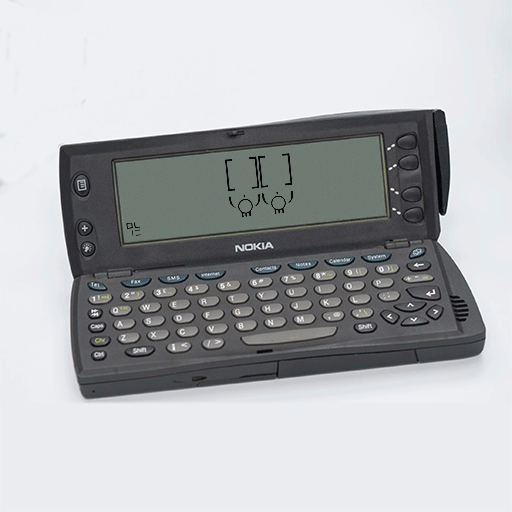interactive world in dual-screen installation with surround sound
Troy Innocent 1998
Sound by Ollie Olsen
Programming by Steve Taylor and Troy Innocent
Iconica explores endemic properties and unique characteristics of virtual worlds via an artificial world made of language. Rather than using a biological metaphor the work refers to the underlying code of the simulation, revealing it as a pictographic language, a readable visual code. This constructed language in Iconica has multiple functions – a conceptual model, symbols to represent objects in computer code, interaction within the world, and communication between digital entities and humans.
Iconica's world is made of language - each object in the artificial life simulation has multiple representations: as icon, as image, as code, as sound. Iconica looks at the nature of reality in the digital realm by using a metaphorical constructed world exploring six audiovisual representations of reality. The starting point for this world is the definition of a language of icons, using individual symbols and grammatical structures to create a diverse range of meanings. These forms are based on observation, discovery, collection and cataloguing of symbols and shapes that are endemic to electronic space. These icons are the basic building blocks an artificial life model that runs the world, the behaviour of the objects and lifeforms within it.

The language of Iconica was translated to the Nokia 9110 smartphone for Alien Intelligence (Helsinki, Finland 2000) at Museum of Contemporary Art Kiasma. The installation included six Nokia 9110 Communicators, each configured to one the elements of Iconica, having their own graphics and sound. In each device 10 possible states are selected via SMS. Each of these states is a loop of five images and one sound denoting actions and emotional states of entities in the artificial world: attack, defend, reproduce, neutral, hungry, angry, scared, happy, unhappy, transform.
A set of emoji-like icons communicate the ontology of the virtual world, with grammatical relationships between them establishing the rules of the simulated life that 'lives' there. A generative model is used to recombine libraries of images, sounds, and animations and the behaviour of the lifeforms is driven by genetic programming, so that they may evolve and adapt to new situations. Drawing upon the Holland's model in Hidden Order, this recombination process is based on a genetic algorithm, resulting in endless variations of image and behaviour. The result is that parts of the world die and decay, while others thrive bringing new entities, forms, icons and meanings into the space.
This space does not model a literal representation of reality or biological system, but instead intends to model a metaphorical space with its own rules of existence and being. Artifical life "speak" their own audiovisual language, and players must learn parts of this language to communicate with the lifeforms. The multiplicity of Iconica is experienced through this interaction - simultaneously a cyberspace, a mindspace, an abstract world, and a stylised reality.
During the period of the installation the space evolves, changes and mutates in response to player interaction and autonomous evolution. Each time the work was installed a persistent simulation was established that allowed the work to evolve over days or weeks at a time. An online representation of this world simulation was uploaded at the end of each day that tracked the shifts and changes in population and movement between the six basic elements of the world.
Different media were explored in translating the artificial world outside of the installation space, including print and web media.
Produced in association with the Australian Film Commission